In follow up to my recent interview with Green and Gorgeous as part of the Farmer and the {Florist} interview series, I want to profile another leader and rising star of the seasonal flower movement internationally. This week I’ve invited Gabriela Salazar to join me to share more about La Musa de las Flores, her floral and event and design business based in Mexico City.
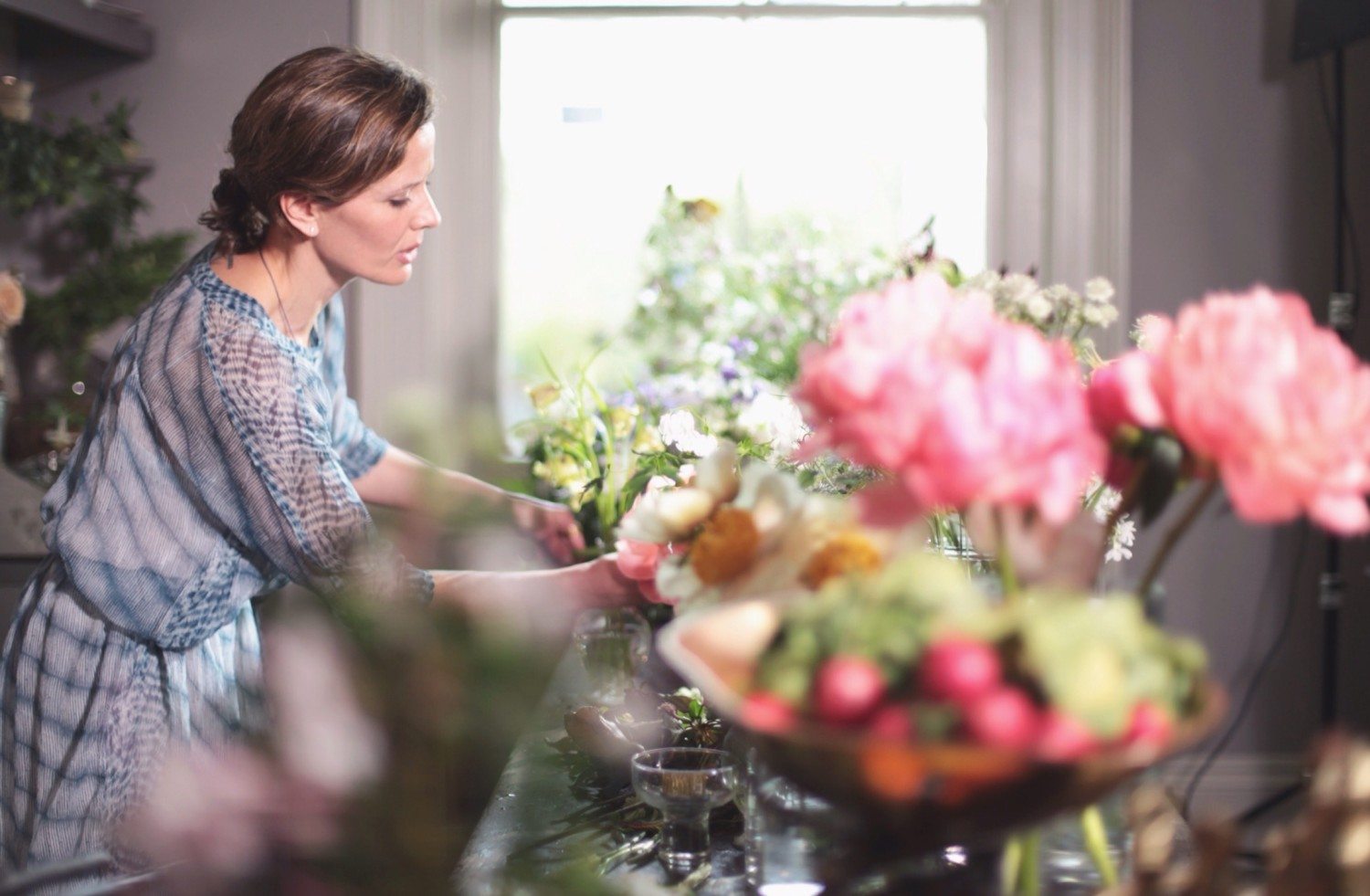 Gabriela’s education and experience in art, interiors and photography, spans across two continents. Before launching her floral design business, Gabriela previously worked in real estate and interior design in Mexico City and later moved to London where she studied architectural interiors at the Inchbald School of Design while also working with contemporary artists. Over the last couple of years, Gabriela has trained with and worked alongside some of the very best in the floral design industry. Last fall I had the pleasure of meeting her in person at the Seasonal Floral Intensive here at Floret where I got to see her design talent and keen eye for color firsthand. Gabriela is taking what she has learned and is now leading by example and sharing the beauty and bounty of seasonal flowers in Mexico.
Gabriela’s education and experience in art, interiors and photography, spans across two continents. Before launching her floral design business, Gabriela previously worked in real estate and interior design in Mexico City and later moved to London where she studied architectural interiors at the Inchbald School of Design while also working with contemporary artists. Over the last couple of years, Gabriela has trained with and worked alongside some of the very best in the floral design industry. Last fall I had the pleasure of meeting her in person at the Seasonal Floral Intensive here at Floret where I got to see her design talent and keen eye for color firsthand. Gabriela is taking what she has learned and is now leading by example and sharing the beauty and bounty of seasonal flowers in Mexico.
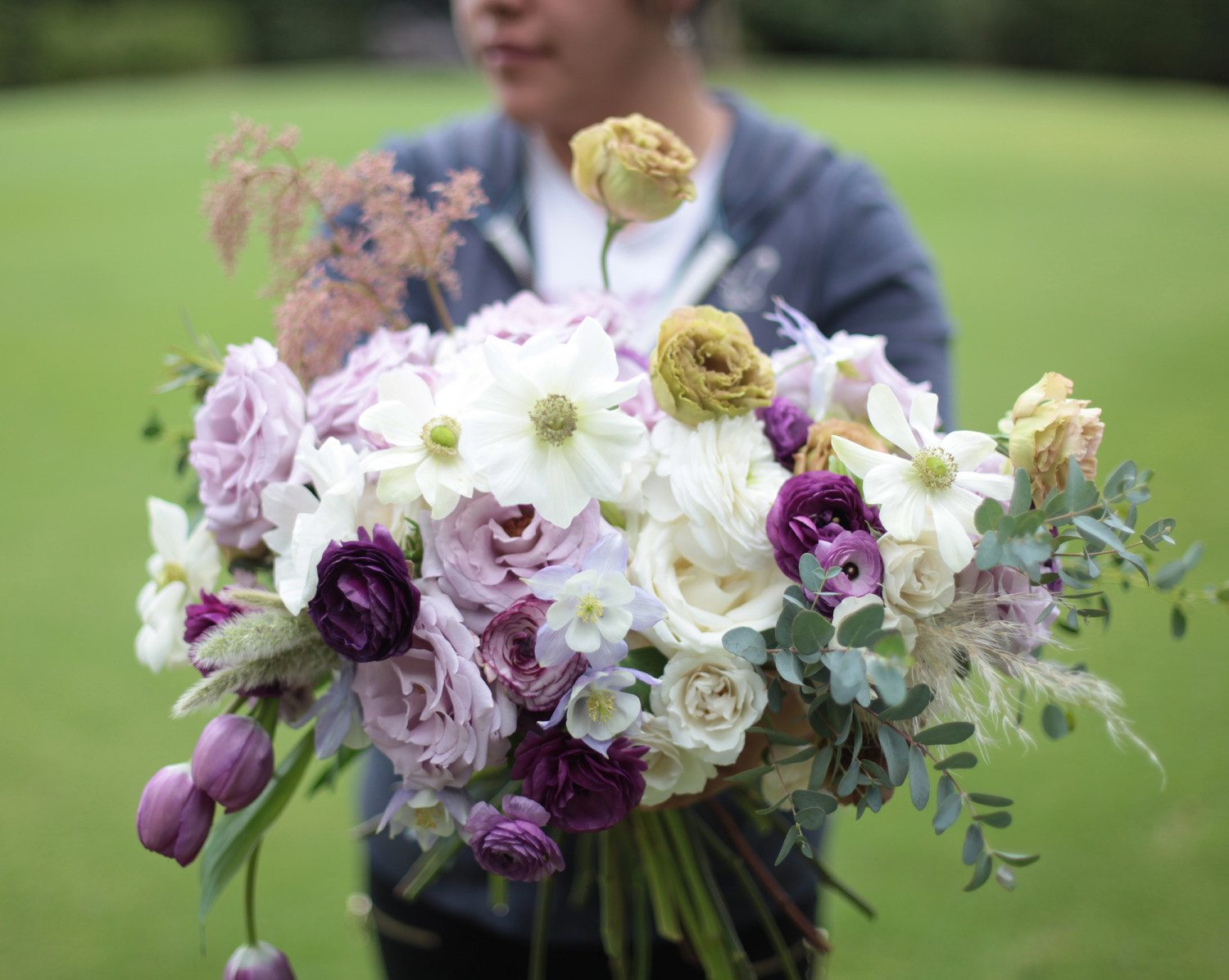
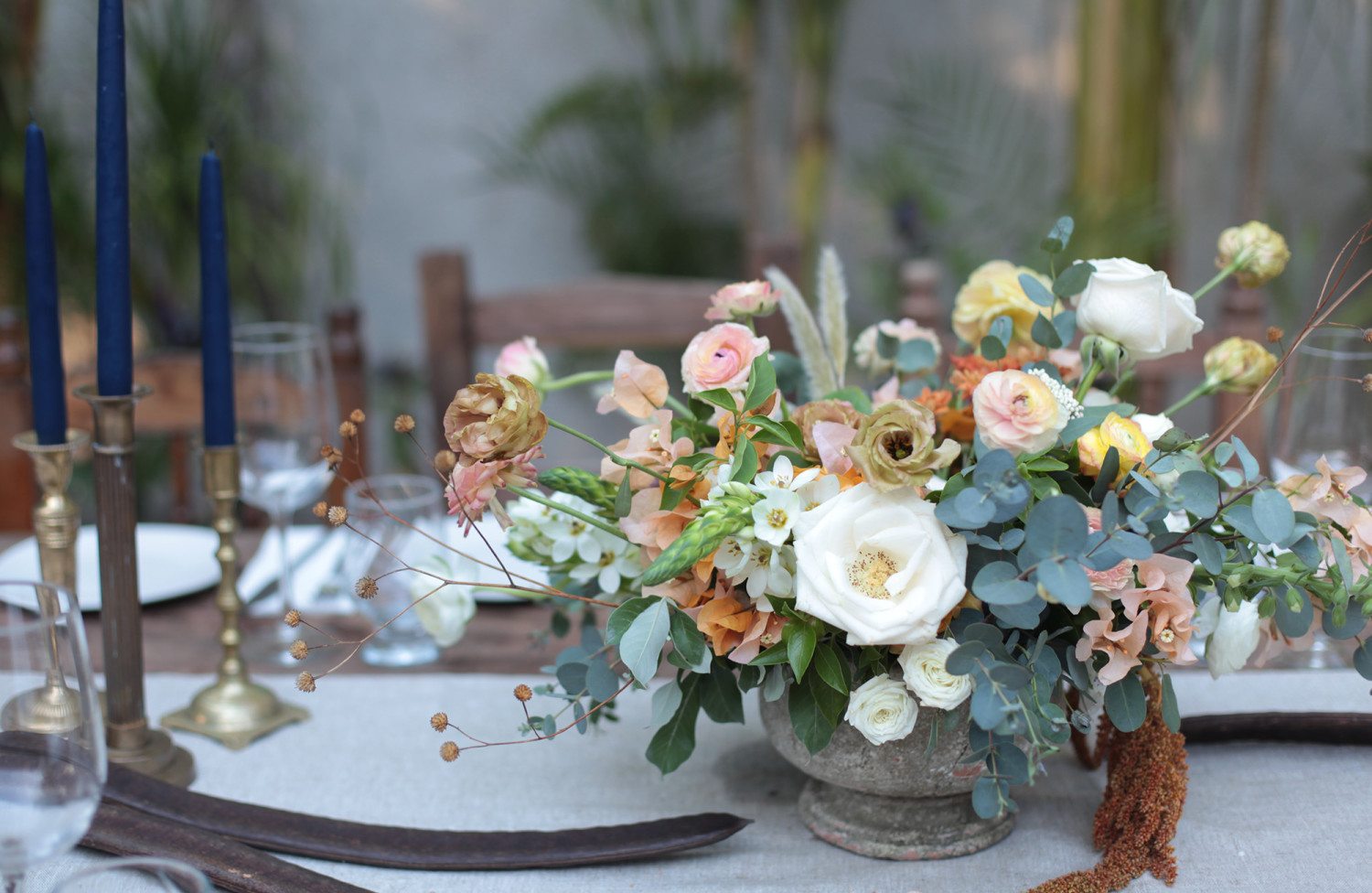
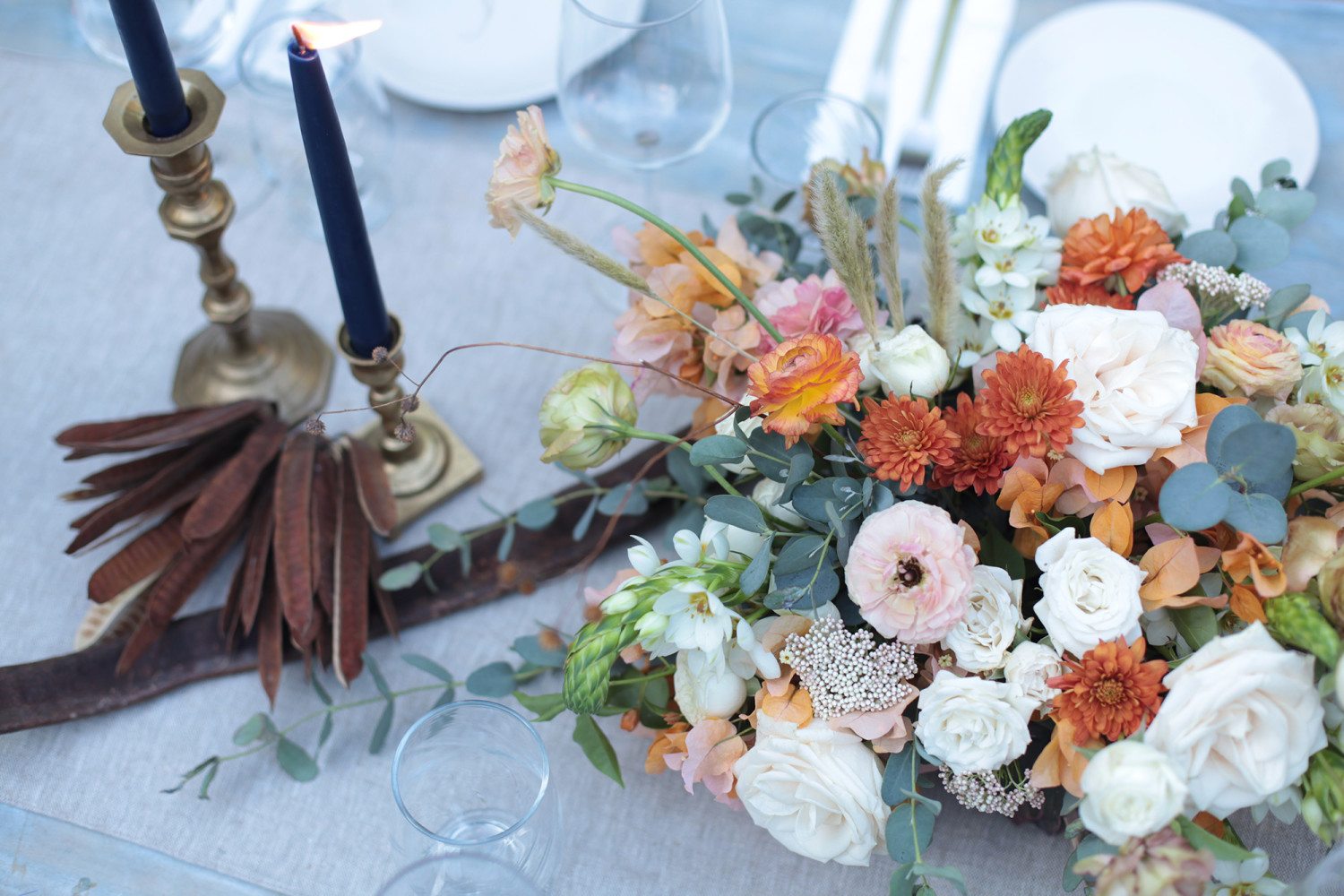 Erin: First off, I have to hear more about the Jose Villa Photography Workshop at Hacienda el Carmen in Mexico last November. You worked with a star-studded cast of designers, stylists and photographers, including past Farmer and the {Florist} Interviewees Sarah Winward and Sarah of Saipua. The photos I’ve seen from the event are absolutely stunning. I understand you were tasked with coordinating the flower sourcing for the two-week event. Can you tell me more about that task (and the entire experience)?
Erin: First off, I have to hear more about the Jose Villa Photography Workshop at Hacienda el Carmen in Mexico last November. You worked with a star-studded cast of designers, stylists and photographers, including past Farmer and the {Florist} Interviewees Sarah Winward and Sarah of Saipua. The photos I’ve seen from the event are absolutely stunning. I understand you were tasked with coordinating the flower sourcing for the two-week event. Can you tell me more about that task (and the entire experience)?
Gabriela: I had just moved back to Mexico, after living almost 4 years in London, when I was invited to do the flower sourcing for the Jose Villa workshop in Guadalajara. It was a very exciting task and also very nerve-wracking for me. I wasn’t familiar then with the flower market here, as I am now, and I was used to the London flower market, where things work completely differently. I visited wholesalers and growers and, with very little knowledge, I decided to do it. I was nervous because I saw so many beautiful images that Jose Villa can create for his workshops, and I knew I wanted to contribute to that. I also wanted to bring beautiful flowers so Sarah Winward and Sara Ryhanen could have what they needed. I have to say that I wish I knew as much back then as I know now – I don’t know if it could have been more stunning, because they created amazing things. Between Jose Villa and Joel, Laurie Arons, Diana from Casa de Perrin. Amber Moon, Karina Puente, and of course Sara Ryhannen and Sarah Winward and all the people that worked there, it was magic. So much beauty coming together in one place! I love the amount of detail Jose and his team care about. From table settings to boudiere sets, engagements, bouquets, and all kind of beautiful details the assistants can photograph. The two welcome dinners for the assistants were amazing. The table setting with Sara Ryhanen was a delight to see. She is just magic, with so much calm and with whatever she has she makes stunning compositions. I mean, that table with mamey, agaves and papayas! I was so happy to be part of all that. I learned so much. I think it was one of the most enriching experiences I have had so far in my flower path.
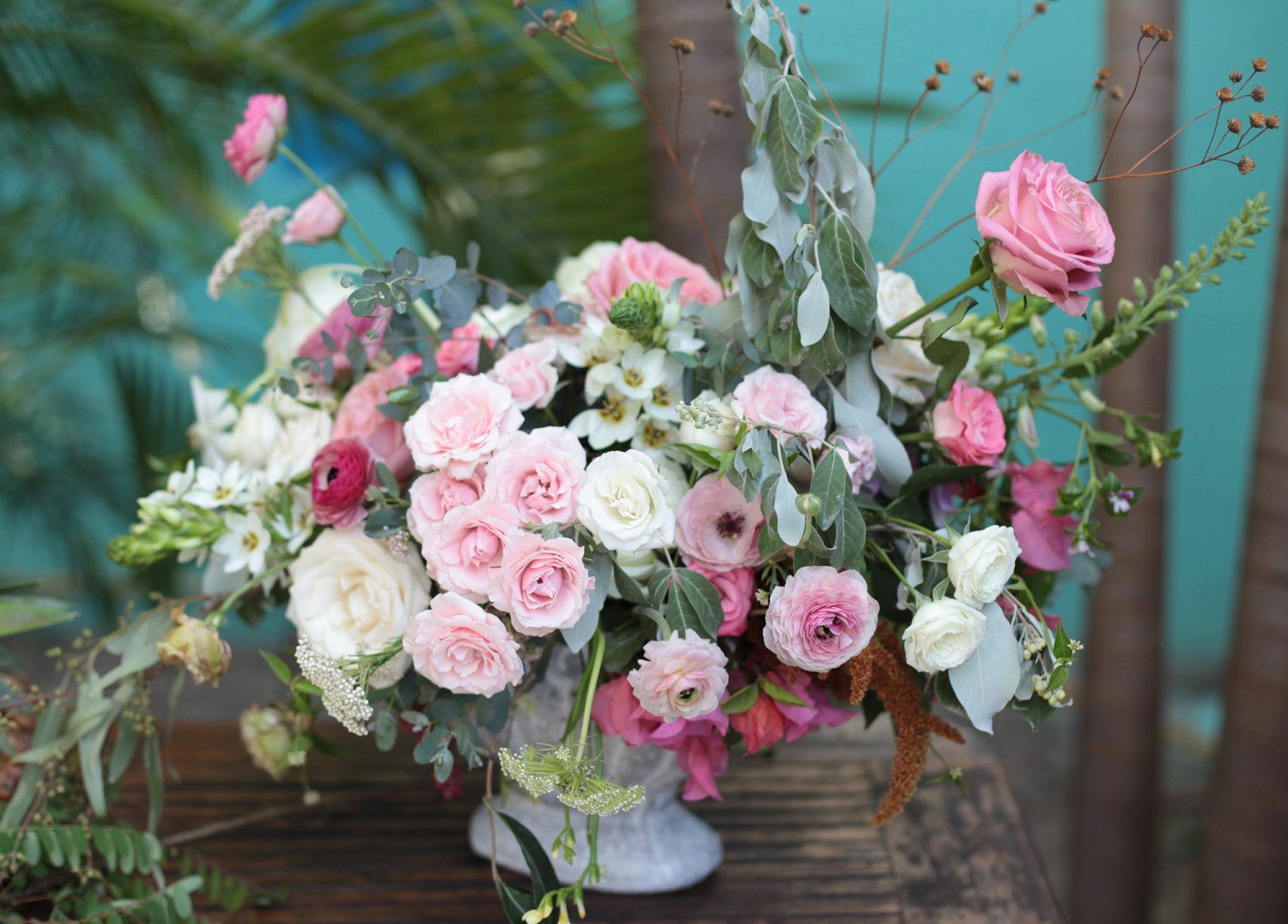 Erin: How would you describe or characterize the floral industry in Mexico? Is there much commercial production of flowers there or do the Colombian floral exports make their way there, too? And what about the seasonal flower movement? Beyond your groundbreaking work there, are there others making inroads?
Erin: How would you describe or characterize the floral industry in Mexico? Is there much commercial production of flowers there or do the Colombian floral exports make their way there, too? And what about the seasonal flower movement? Beyond your groundbreaking work there, are there others making inroads?
Gabriela: I think flowers are a very important part of Mexican culture, flowers are everywhere, every corner, every home, and the production of flowers in this country is huge! Stacks of roses and roses fill the markets. And it’s beautiful. I think our production is huge, and growers in Mexico work really hard, markets are open 24 hours. Flowers markets in Mexico are not only for designers or people in the floral industry, they are a popular place and lots of people visit them for flowers, fruits, vegetables, plants and food.
The problem for me as a designer is that we don’t have many different varieties and the growers that grow the more specialized varieties such as ranunculus, foxgloves, anemones, narcissus, wild sweet-pea, zinnias or dahlias, for example, are very small and their production can be very random. Also, we don’t have a lot of varieties here and imported flowers can be insanely expensive.
I guess that is when you learn to do the best that you can with what you have. And for me it’s been a huge learning process. If our market was easy, maybe I wouldn’t have grown as a designer as much as I feel I have. You have to search a lot, and work with very random and lucky moments when suddenly you found something really unique and beautiful in the market. And in that sense I would love to encourage so many designers that have limited varieties in their local markets. Sometimes limitations make us work harder and find other ways to do things and for me that has been very important. I buy in the market, look for the wild stuff, buy in nurseries, forage and I feel all that has made me a more confident designer when things don’t go as planned, I have been to the London flower market, to the huge Holland market and the beautiful Dutch Line in NY, and I have to say that even when this Mexican market can be limited in comparison to those, and very very random, it has a special magic too.
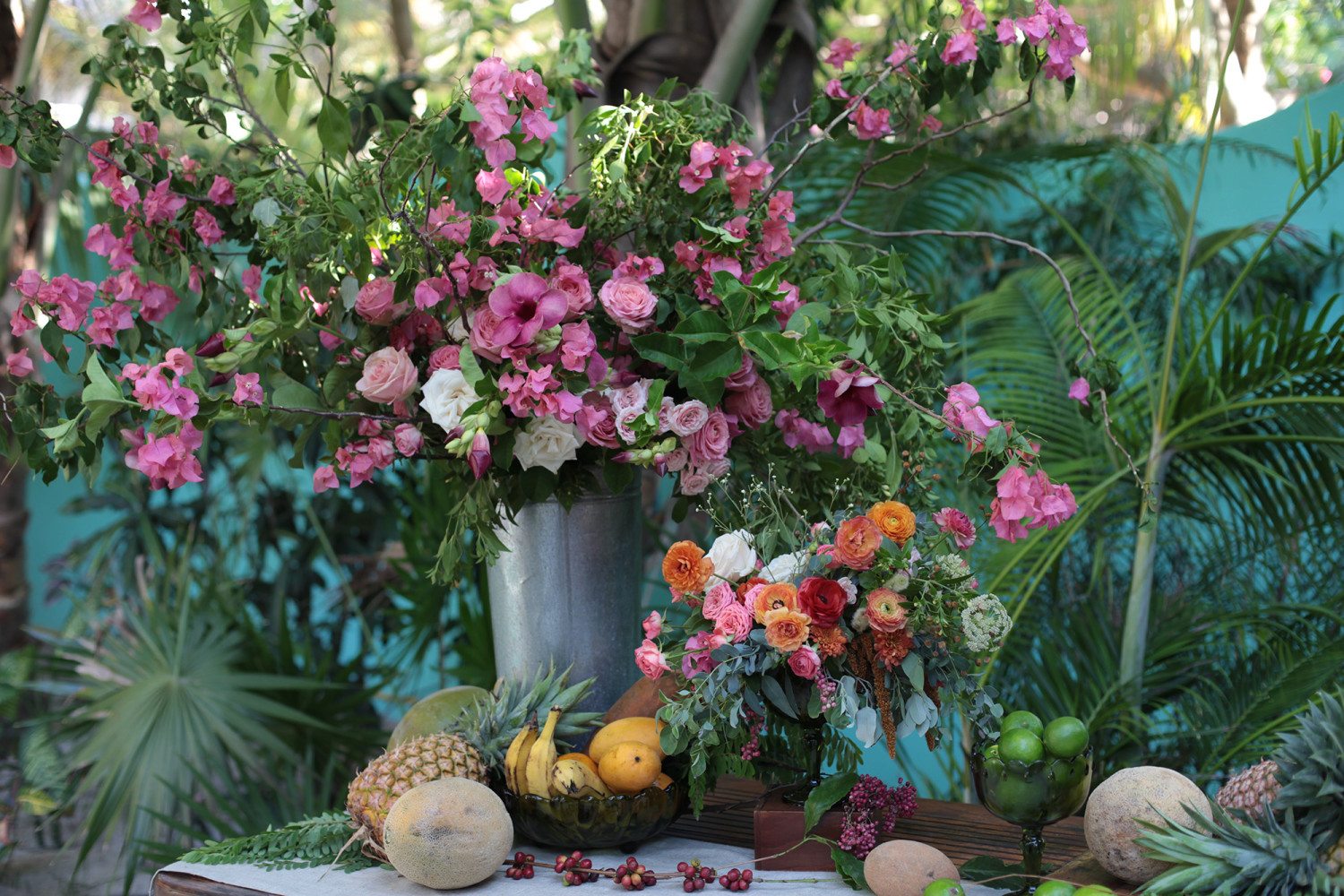 About the seasonal flower movement; there are not such clearly delineated seasons in the Mexican market. There is a saying that “it is always spring somewhere in Mexico.” I mean, you can have all the varieties coming in at once, because Mexico City’s flower market is provided by growers all around the city and the weather systems can be completely different. You can have more wintry stuff coming from Estado de Mexico, while in Cuernavaca “it is always spring”.
About the seasonal flower movement; there are not such clearly delineated seasons in the Mexican market. There is a saying that “it is always spring somewhere in Mexico.” I mean, you can have all the varieties coming in at once, because Mexico City’s flower market is provided by growers all around the city and the weather systems can be completely different. You can have more wintry stuff coming from Estado de Mexico, while in Cuernavaca “it is always spring”.
I think that my style, a more wild and free way of doing flowers, is not something that has been done very much in Mexico before. It is something relatively new, and not everybody is familiar with it. Sometimes it is really hard to sell this style, especially in a country that has weddings of 350 people as a minimum. It is a more expensive style, and not everybody understands it or wants to pay for it. I have been approached by other flower designers here, who really want to learn how to do it, and I have taught them while they work with me on the bigger weddings we have done here.
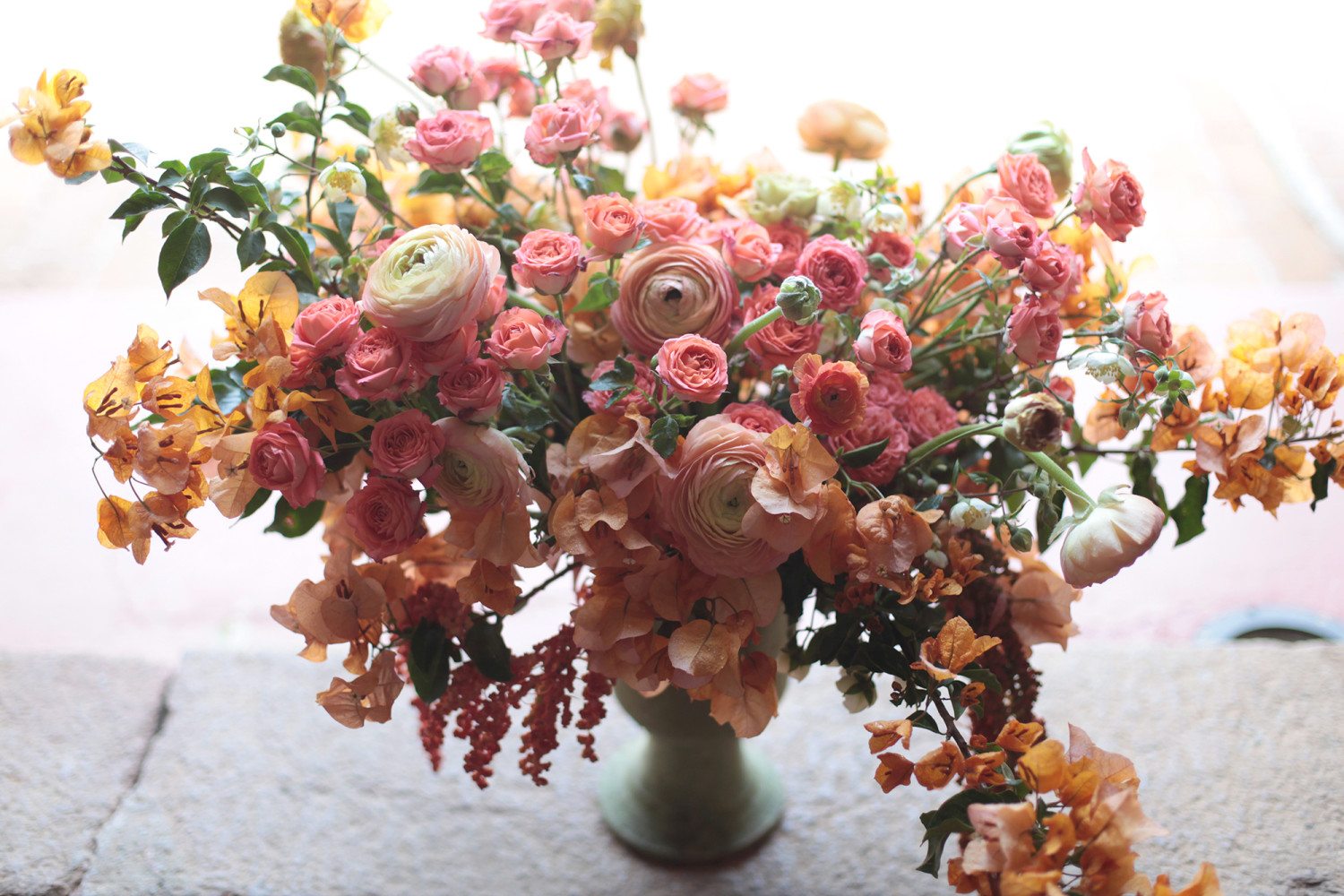 Erin: Do you have relationships with local growers? I hear you are planning to grow some of your own flowers. Tell me more about your plans!
Erin: Do you have relationships with local growers? I hear you are planning to grow some of your own flowers. Tell me more about your plans!
Gabriela: I know very small growers, the ones that have been supplying the small beauties I have luckily been able to work with. They don’t grow a lot of these varieties because it is not what they usually sell. So, its hard, because it’s never their priority.
I want to grow new varieties in Mexico with families of growers. Especially dahlias, which are supposed to be the national flower. I mean, you see a lot of dahlias here, but not as a cut flower, rather as a potted plant. The season for dahlias in Mexico could be 7 to 8 months. It’s the perfect weather to grow them. Chrysanthemums, for example, grow all year round in Mexico, we just don’t have all the colours I love.
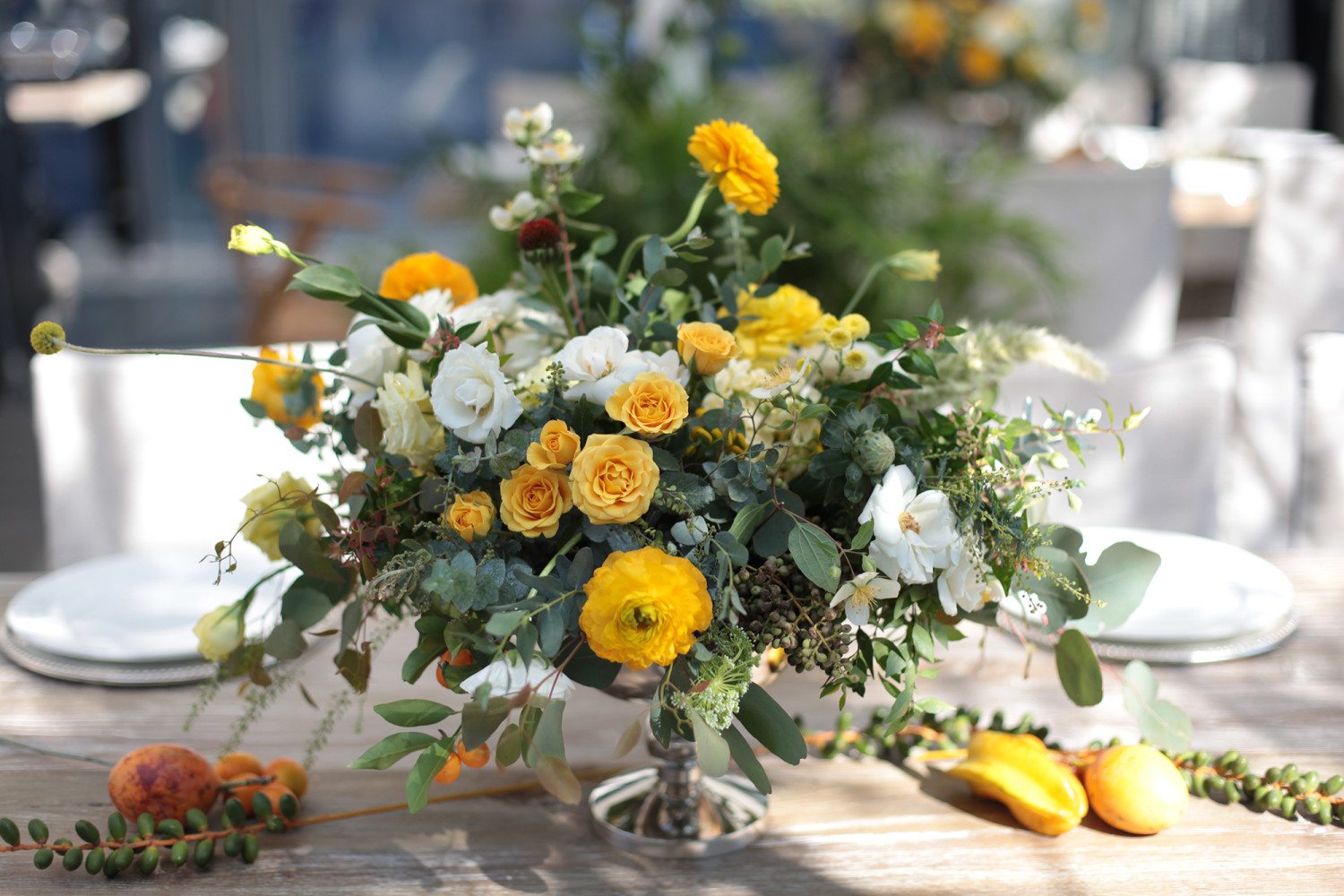 Roses in Mexico are so beautiful, I have been using majolica so much, I can’t help how beautiful it is here, the call it “vendela mini”. Also the roses you can find in nurseries are stunning.
Roses in Mexico are so beautiful, I have been using majolica so much, I can’t help how beautiful it is here, the call it “vendela mini”. Also the roses you can find in nurseries are stunning.
Sometimes it is hard to convince growers to get out of their usual way of doing things and their very known products to expand into other varieties that might be more interesting but commercially less certain. I think this is my more ambitious project. There is so much that we could do in this field, so many families that would benefit from it, and of course I think there could be some very happy floral designers if we could get the growing to change and evolve in these directions. I can’t wait for the day I can work with my own blooms.
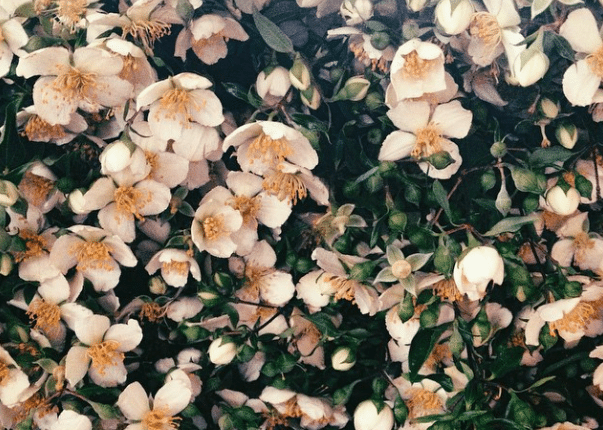 Erin: I saw you recently posted a photo full of magical mock orange, which you said was one of the things you love about Mexico. What are a few of your go-to varieties of floral material you use in your designs?
Erin: I saw you recently posted a photo full of magical mock orange, which you said was one of the things you love about Mexico. What are a few of your go-to varieties of floral material you use in your designs?
Gabriela: Mock orange is called Jasmin in Mexico, that is a variety you see almost all year round, especially the white ones. The yellow one is so beautiful and its aroma is so intense. These types of flowers, for example, are bought from people that grow them wildly on their land. It is not something you get from a wholesaler. You just have to go on the day they are there and wait for them to bring a relatively small amount that day. Especially the yellow one – if you don’t get there early you will miss it.
Jasmin is in the part of the flower market that sells wild flowers, just what grows seasonally and randomly on their land. It’s always my favorite part of the market – there is always a surprise there. The names I guess are never very scientific: escobilla, flor del chillillo, enjambre etc. They are just how they decided to name them. I wander around the market a lot, and I have found beautiful things in small benches here and there. I receive emails from Mexican designers asking me where do I get my flowers from? There is no hidden secret, it is just a matter of wandering a lot and looking for beauty. The difficult thing I guess is that your clients have to trust you, because it’s always about those last-minute finds – whatever you see that day you are getting your other flower orders picked up, some other beauties that can catch your eye.
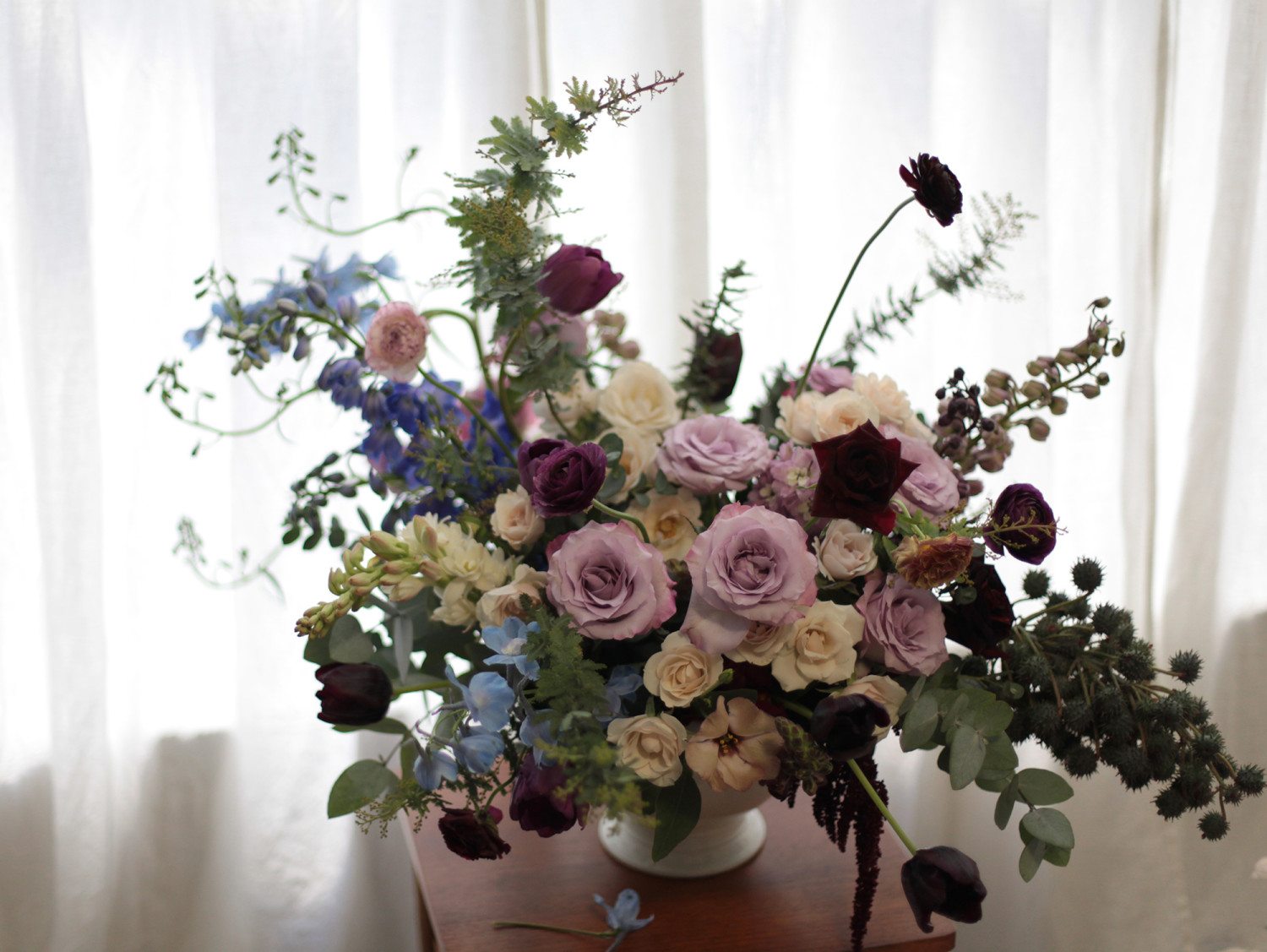
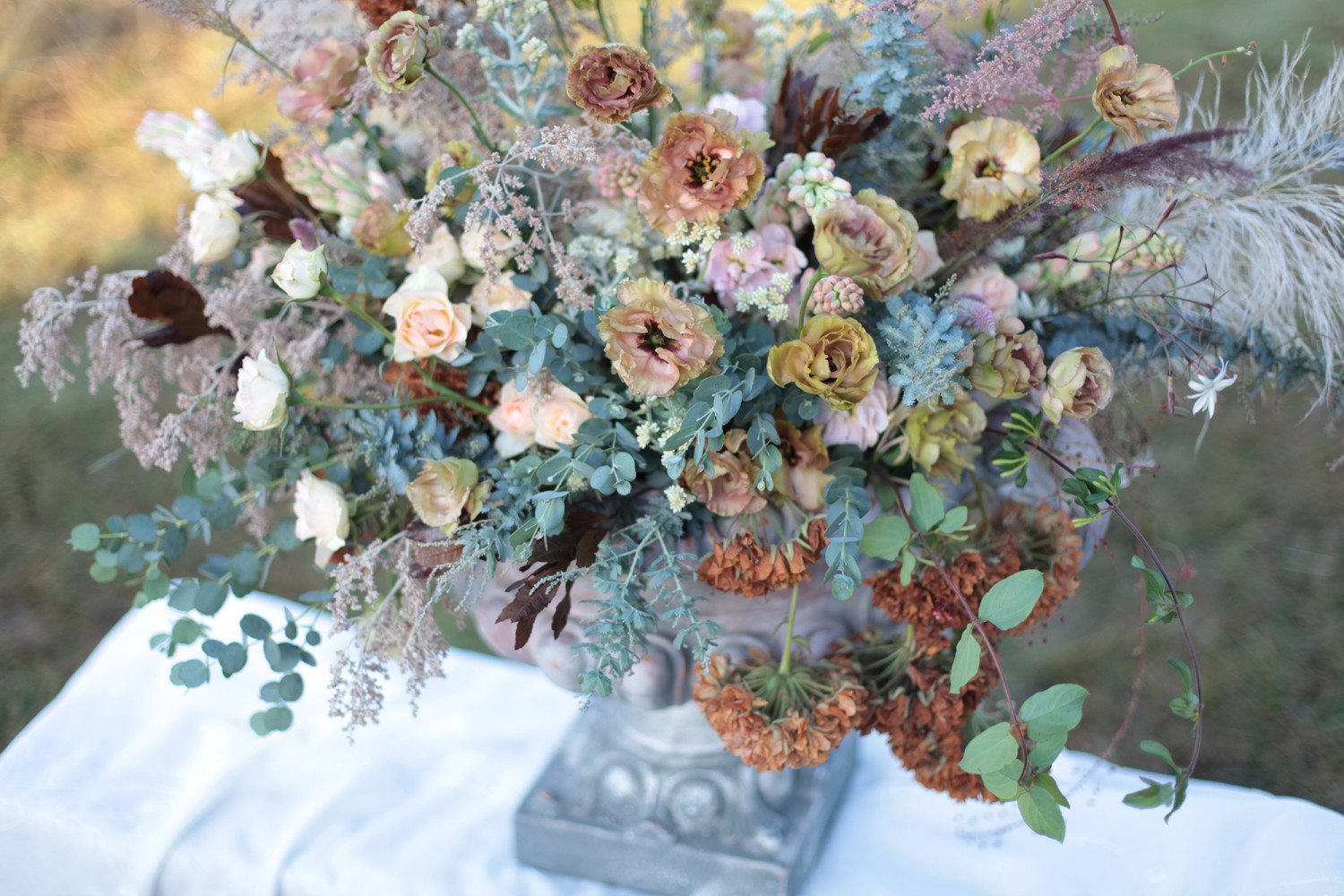 Erin: You’ve had such an interesting career, Gabriela. Tell me more about what is on the horizon for you. Anything you can preview?
Erin: You’ve had such an interesting career, Gabriela. Tell me more about what is on the horizon for you. Anything you can preview?
Gabriela: It’s been a very intense year and a half. I had my first floral class with Sarah Ryhannen in January 2014, and from then on there has been so much growth – for me as a person, and also for me professionally on my floral path. Some days it gets scary, other days I am just filled with excitement. I was very afraid of moving back to Mexico, I was getting used to London’s flower market, and I didn’t know what to expect here in Mexico. But life can be wiser than us, and take us to the right place when we are open to it. So, here I am and I can’t begin to tell you how clearly I have found what I want to do: Growing flowers with families of growers; making the women of those families the keepers of a new generation of flowers in Mexico; keeping designing, work with my own flowers and also sharing what I know with the floral designers in Mexico that want so much to learn this style.
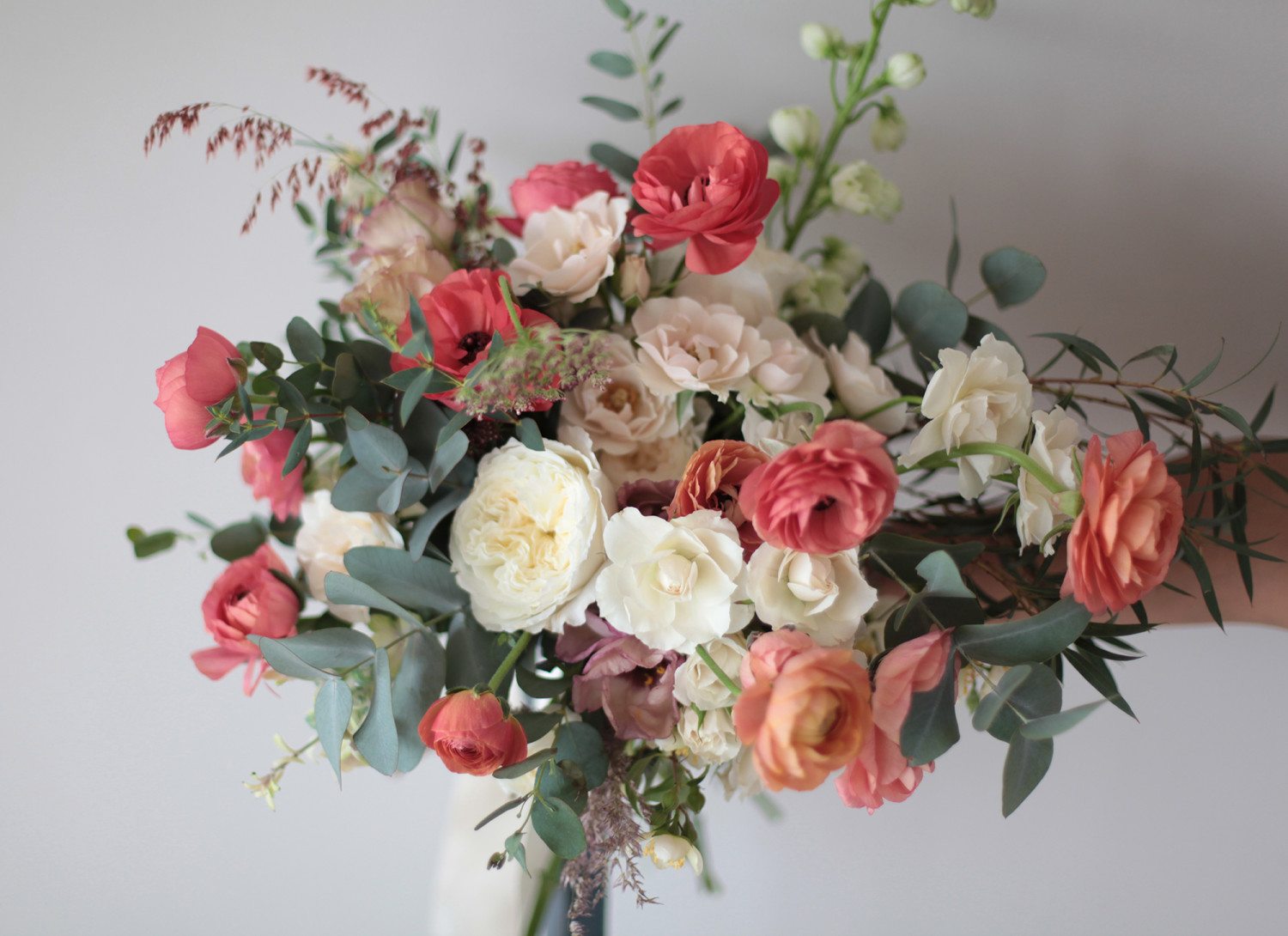 This year I will be working with Ariella Chezar in Cabo and Kristen of Moon Canyon in Tulum. I will be participating in the Floret workshops too and learn more about growing flowers! I feel profoundly grateful for all the people that have supported my flower journey so far and all my amazing teachers; Sara R from Saipua, the beautiful Ariella Chezar, Sarah Winward, Nicolette Camile, Sue from White Magnolias, and all the Floret Flower team, especially you.
This year I will be working with Ariella Chezar in Cabo and Kristen of Moon Canyon in Tulum. I will be participating in the Floret workshops too and learn more about growing flowers! I feel profoundly grateful for all the people that have supported my flower journey so far and all my amazing teachers; Sara R from Saipua, the beautiful Ariella Chezar, Sarah Winward, Nicolette Camile, Sue from White Magnolias, and all the Floret Flower team, especially you.
Thanks so much, Erin! I can’t wait to be at Floret soon and be part of the Floret workshops!
Erin: Sounds great! I’m so excited you’ll be able to join me to help with a few of the upcoming Floret workshops. It is going to be fantastic! Thanks again for taking time for this interview!
Connect with La Musa de las Flores:
Web: www.lamusadelasflores.com
Instagram: @lamusadelasflores

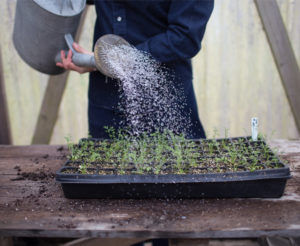
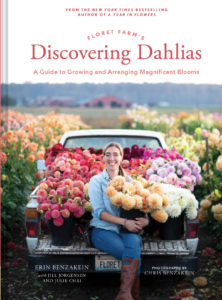
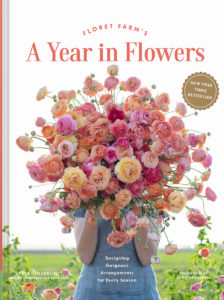
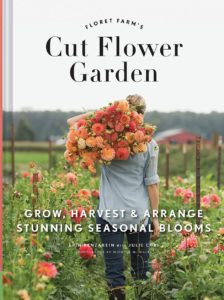

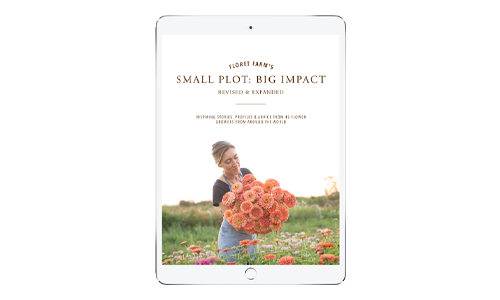
Geis on
Perfect.